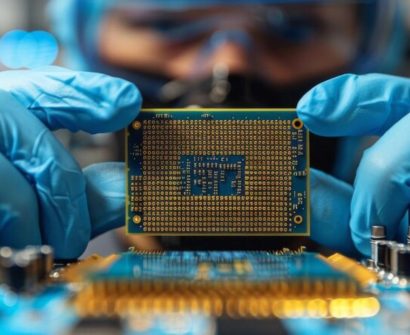
Introduction:
In the ever-evolving landscape of semiconductor technology, Very Large Scale Integration (VLSI) design plays a pivotal role in shaping the electronic devices we use daily. One of the key decisions in VLSI design is choosing between digital and analog approaches. This blog post delves into the nuances of digital and analog design, exploring their differences, applications, and the unique challenges they present.
Digital VLSI Design:
1. Precision in the Binary Realm:
Digital VLSI design revolves around binary logic, where information is represented as discrete values (0s and 1s). This approach is known for its precision and reliability, making it ideal for applications demanding accuracy, such as microprocessors and memory units.
2. Clock Synchronization:
One hallmark of digital design is the reliance on synchronous clocking mechanisms. This ensures that all components of a digital circuit operate in harmony, enabling precise coordination and avoiding timing issues. Explore the intricate dance of clock signals in the digital VLSI realm.
3. Power Efficiency:
Digital circuits are renowned for their power efficiency, as they consume power only when switching between logic states. This efficiency has fueled the widespread adoption of digital design in battery-powered devices, extending their operational lifespan.
Analog VLSI Design:
1. Continuous Waveforms and Real-world Signals:
Analog VLSI design, on the other hand, deals with continuous signals, offering a more direct representation of real-world phenomena. This makes analog circuits suitable for applications where the smooth handling of signals, such as in audio processing and sensor interfaces, is crucial.
2. Sensitivity to Process Variations:
Analog design faces unique challenges due to its sensitivity to manufacturing process variations. Achieving consistency and reliability in analog circuits demands meticulous attention to detail, making the design process more complex and challenging.
3. Customization and Flexibility:
Analog VLSI design provides a higher degree of customization and flexibility compared to its digital counterpart. Engineers can tailor analog circuits to specific applications, optimizing performance for diverse requirements.
The Convergence: Mixed-Signal VLSI Design:
As technology advances, the boundaries between digital and analog VLSI design blur, giving rise to mixed-signal design. This hybrid approach combines the precision of digital logic with the continuous handling of analog signals, opening new frontiers in applications like communication systems and data converters.
Conclusion:
In the realm of VLSI design, the choice between digital and analog approaches is not a matter of one-size-fits-all. Each has its strengths and weaknesses, and the decision depends on the specific requirements of the application at hand. Whether navigating the binary landscape of digital design or riding the continuous waveforms of analog circuits, VLSI engineers continue to push the boundaries of innovation, shaping the future of electronic devices.
To know more about VLSI Course , SuccessBridge VLSI training institute. You can begin your VLSI career by enrolling in the placement-assisted live courses available at SuccessBridge We offer various VLSI online courses. We offer VLSI Physical Design course, Design Verification course, DFT Training,Chip design course many more. Explore VLSI Courses From The Leaders In VLSI Training
Also Read: Industry-Ready VLSI Training In Bangalore: What To Expect?






